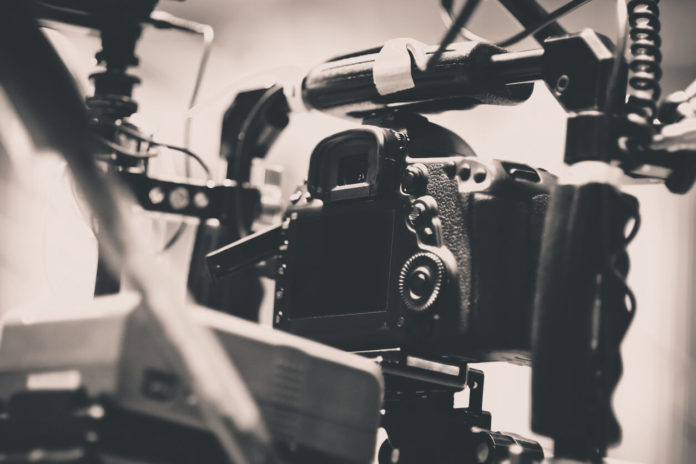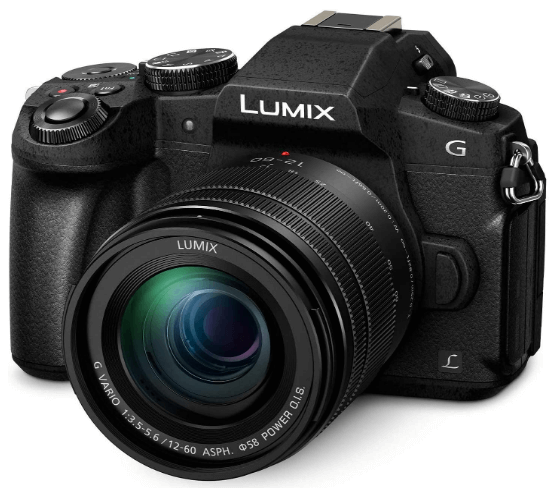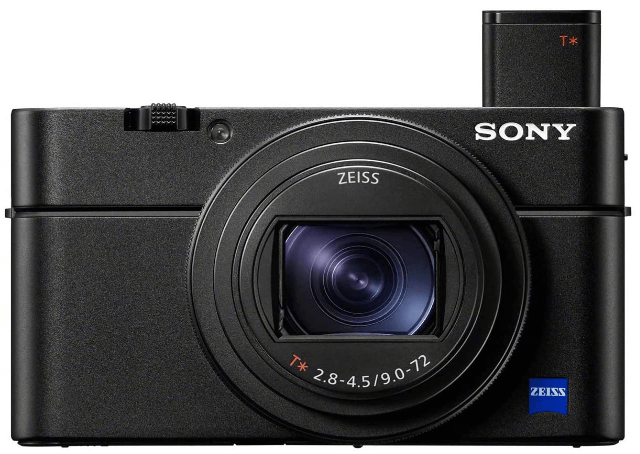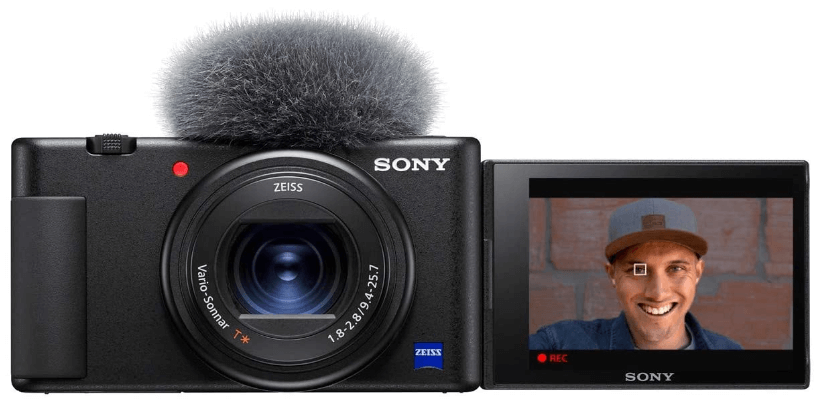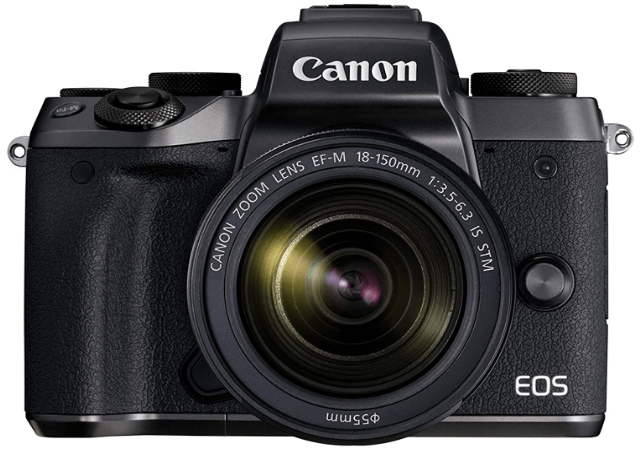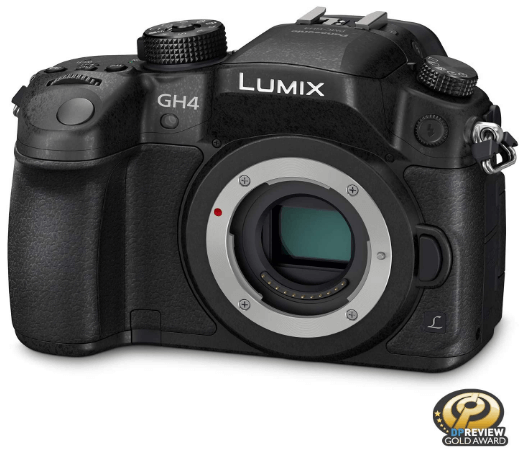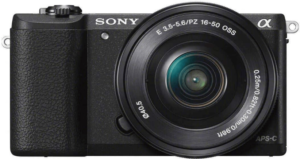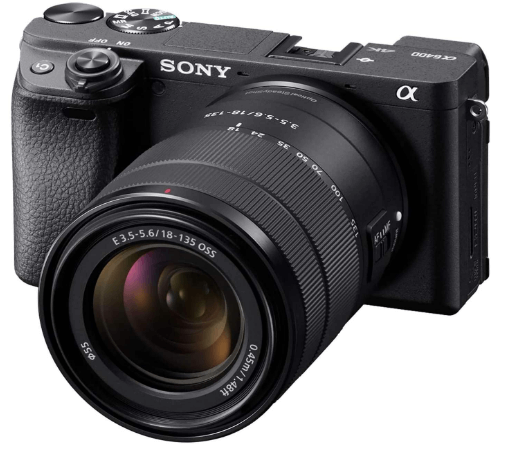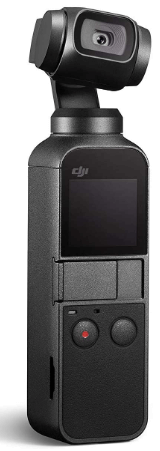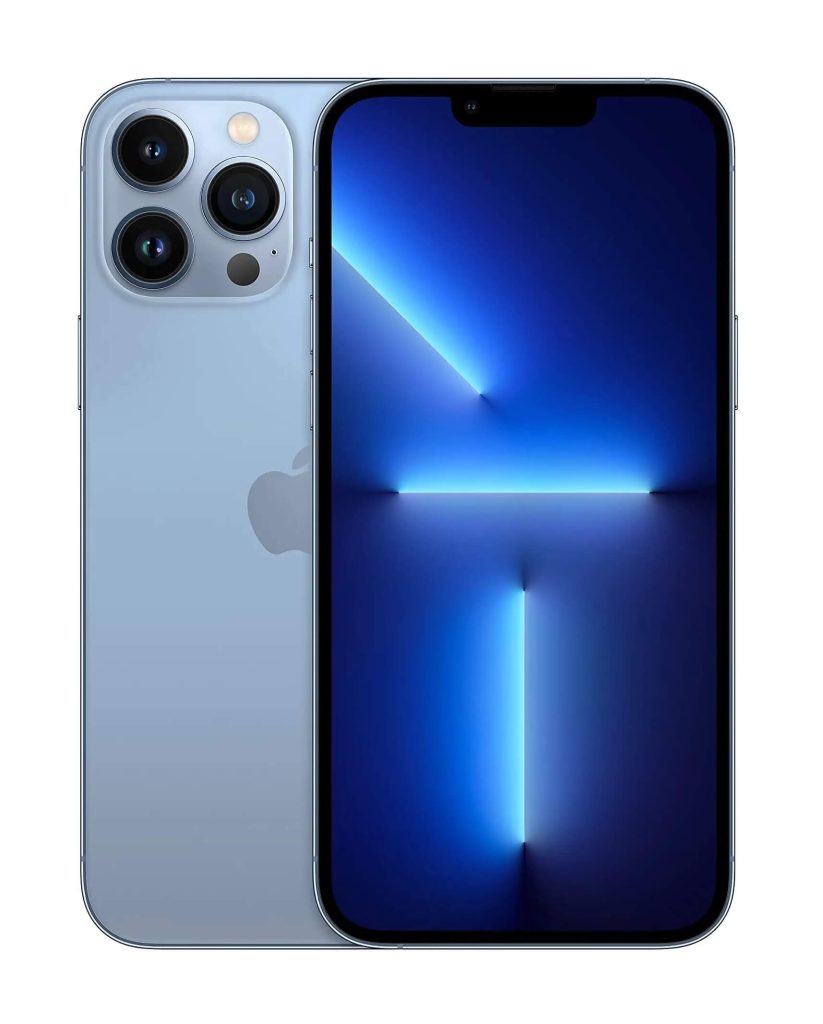With vlogging widespread, video cameras are becoming cheaper all the time. Even the latest mobile phones are capable of recording excellent quality, 4K video, often even with slow-motion. So, with hundreds of different options out there, choosing the best affordable camera for filmmaking can be a challenge. With so many brands and models, how do you know which to choose?
Luckily for filmmakers, there are loads of budget-friendly cameras out there that are capable of running high-quality video. So, we have compiled an in-depth guide featuring ten of the best cameras for filmmaking. Read on to find our top picks from some of the biggest camera brands at great prices.
Contents
- Top 10 Best Budget Filmmaking Cameras in 2021
- 1. Panasonic Lumix G85
- 2. Sony RX100 VII
- 3. Sony ZV-1
- 4. Canon EOS M5
- 5. Nikon D3500
- 6. Panasonic Lumix GH4
- 7. Sony a5100
- 8. Sony Alpha a6600
- 9. DJI Osmo Pocket Gimbal
- 10. iPhone 13 Pro / Max
- What is the Cheapest Camera for Filmmaking?
- What Camera Should I Buy for Filmmaking?
- Which DSLR is Best for Filmmaking?
- Is a Video Camera Better than a DSLR?
- What’s the Difference Between 4K and Ultra HD?
- Do I Need a 4K Camera?
- Should I Choose a DSLR or a Mirrorless Camera?
- Is an External Microphone Necessary for Filmmaking?
- What Lenses Do I Need for Video Making?
Considerations Choosing a Camera for Filmmaking
First of all, there are a few considerations to keep in mind when choosing between the different models on the market.
Video Quality
First and foremost, you’ll want to make sure the camera you are buying offers outstanding-quality video. These days, this often means 4K resolution, or at the very least, Full HD, also known as 1080p. Many filmmaking camera models can shoot 4K, so this probably won’t be something you’ll have to worry about.
Ease of Use
When shooting video, it’s essential to have easy access to controlling the most common settings. That means you shouldn’t have to go through several menus in order to adjust a frequently-used setting. Also, if you’re new to videography, it’s best to choose a camera that is intuitive and easy to use, perhaps with a guide or automatic mode to help.
Low-Light Performance
As a videographer, you’ll probably find yourself filming in low-light at one point or another. So, it’s a good idea to choose a camera that has the ability to capture great image detail even under poorer lighting conditions. A higher maximum ISO and larger sensor size are factors to look out for when searching for a camera that will do well in low light. This is usually hard to achieve with the lower end of the budget cameras lineup so if you need to shoot low-light or night scenes this is an important factor to consider.
Compatible Lenses
If you’re going for an interchangeable-lens camera, it’s important to check out the range of lenses that are compatible with your chosen model. Find the lens which will be best suited to the subject of your videos, and also set a realistic budget. Some lenses can cost more than the camera body, so be sure to factor this in to your overall budget if you don’t want to spend too much.
Battery Life
This is another important consideration when looking for the best camera for filmmaking on a budget. If you are shooting longer videos or going out all day, it’s crucial to ensure the battery isn’t going to run out. On many cameras, shooting video depletes the battery quite quickly, so getting some extra backup power is a good idea.
Sensor Type
The type and size of the sensor will strongly influence the camera’s performance. A full-frame camera allows more light to hit the sensor, thus enhancing the low-light performance. A smaller sensor will produce a crop factor thus changing the focal length of the lens you choose to pair it with, so this is worth considering when deciding which lens to buy, too.
Image Stabilization
All good cameras and lenses should be equipped with image stabilization as this will reduce the effect of camera shake when shooting handheld. This will make the video footage smoother and clearer, especially when using a lower frame rate.
Autofocus System
Sometimes it can be difficult or time-consuming to manually set the focus, so having a great autofocus system is going to prove useful. Look for a device with many autofocus points so you can always get your subject in sharp focus when shooting a video.
Memory Card Slot Location
Some cameras have the SD card slot located underneath, which can make changing the card difficult if the camera is connected to a gimbal or a tripod. Those with the card slot on the side make this considerably easier.
Screen Type and Resolution
It can be helpful to have a tilting screen when recording video, as it will help you see what you are shooting when working at awkward angles. A higher resolution screen is beneficial when watching the footage back.
Value for Money
When buying a camera, you’ll want to make sure you get the best bang for your buck. That means comparing the features of different cameras across a similar price point, and also checking which lenses fall within your budget. The most expensive camera isn’t necessarily the best for your needs, so compare different models and don’t pay extra for fancy features you don’t need.
RAW Recording
RAW footage is uncompressed and thus retains more data. It can also more easily be edited if you want to change the look of your footage, and it just generally looks better than video shot in compressed formats. The drawback is that RAW video output produces huge files, so a generous external memory is needed even for a short video clip. The RAW recording functionality is unlikely to be found even on the best budget cameras.
Frame Rate
Finally, you might wish to consider the frame rate you can shoot at. If you want to get some slow-motion shots, a high frame rate will be essential. However, some cameras reduce the quality when shooting at a high frame rate, so this is something to look out for.
Top 10 Best Budget Filmmaking Cameras in 2021
We will now highlight the key features of what we believe are ten of the best cameras for filmmaking on a budget. they all come in at under $1500
1. Panasonic Lumix G85
The Panasonic Lumix G85 is the first budget video camera we have chosen to feature. It features a micro four thirds, 16 MP sensor and is capable of 4K video recording. This camera has five-axis dual image stabilization to ensure you get crystal clear footage, even when shooting handheld.
The LCD on this camera measures three inches and it can be tilted to different angles so you can always see clearly what you are shooting. It’s also touch-enabled for easily setting the focus point. The camera is weather-sealed so it is suitable for using in all weather conditions. This is a mirrorless camera so it is much lighter and smaller than a DSLR with similar features.
- Camera type: Mirrorless
- Lens mount: MFT
- Sensor: 16MP Micro Four Thirds
- Full frame: No
- In-body image stabilization (IBIS): Yes
- AF points: 49
- ISO range: 100-25600
- Max image size: 4592 x 3448
- Video: 4K 2160p 30fps, Full HD 60fps
- Viewfinder: OLED live viewfinder
- Memory card: SD, SDHC, SDXC, UHS I, UHS II, UHS Class 3
- LCD: 3-inch, vari-angle touchscreen
- Max burst: 9 (mechanical shutter), 40 (electronic shutter)
- Connectivity: Wi-Fi
- Size: 2.93 x 5.06 x 3.50 inches
- Weight: 1.11 lbs (body, battery, and SD card, no lens)
Pros
- Reasonably priced
- High-quality live viewfinder
- Tilting, 2360K-dot touchscreen
Cons
- Autofocus can be slow when shooting video
2. Sony RX100 VII
This point-and-shoot camera has an impressive 1-inch 20.1 MP stacked CMOS sensor and is capable of shooting 4K video. The super-zoom lens offers the equivalent focal range of 24-200mm. This means it can be cheaper than choosing a DSLR or mirrorless camera, although it is at the high end of the price scale, and a set of lenses to give this same flexibility to zoom to this distance.
The video autofocus is excellent on this camera – you can use the touchscreen to easily set the focus point. And, there is real-time eye autofocus as well as subject tracking, so maintaining focus throughout a video is easy. The maximum aperture is f/2.8, so this camera performs reasonably well in lower lighting, but it’s not the best option out there if you will be frequently shooting in low light.
There’s a high frame rate mode on this camera which allows you to shoot at extremely high frame rates, all the way up to a whopping 960 fps. Video quality is 4K HDR, and there is a microphone jack should you wish to use an external mic to enhance the audio quality on your videos.
- Camera type: Point-and-shoot
- Lens mount: N/A
- Sensor: 20.1 MP 1.0-type stacked CMOS
- Full frame: No
- In-body image stabilization (IBIS): Yes
- Image processor: BIONZ X
- AF points: 357
- ISO range: 64 – 25600 (native 100 – 12800)
- Max image size: 5472 x 3648
- Metering zones: Face detection, multi, spot, center, highlight
- Video: 4K at 30 fps, 1080p at 120 fps (slow-motion)
- Viewfinder: Push electronic XGA OLED
- Memory card: USH-I
- LCD: 921k dots, tilting 180° up and 90° down
- Max burst: Single burst 90 fps, blackout-free continuous shooting 20 fps
- Connectivity: Wi-Fi, Bluetooth, NFC
- Size: 4.00 x 1.68 x 2.38 inches
- Weight: 0.61 lbs
Pros
- Excellent autofocus system
- Fast continuous shooting for stills
- Image stabilization in videos
Cons
- Doesn’t include the charger plug or printed manual
3. Sony ZV-1
Our next best camera for filmmaking on a budget is the ZV-1 from Sony. This camera is a point-and-shoot but it is strongly aimed towards vloggers, so it is a great choice for creating video content. There is a 20.1 MP sensor and the lens has a 35mm equivalent angle of view ranging from 24 – 70mm. It offers a fast hybrid autofocus system with real-time tracking, so you’ll never need to worry about your footage being out of focus.
This is perhaps the best camera for filmmaking if a person is going to be the subject of the footage, as there is a face-priority auto-exposure mode that ensures faces are always bright and well-exposed even in dim shooting conditions. The camera comes with a rechargeable battery and it has a wind screen to ensure the audio quality is always excellent. There’s also a microphone jack and MI shoe allowing for more possibilities when it comes to external audio devices.
The LCD screen flips out to the side so it can easily be viewed when filming yourself, another reason why this camera is ideal for vlogging. It can take 4K video and there is no maximum length for continuous shooting. You’ll find the latest Sony color science in this camera to ensure your videos look great with an excellent dynamic range. It offers a very high frame rate for shooting in slow-motion – up to 960 fps in 1080p quality.
- Camera type: Point-and-shoot Lens mount: N/A Sensor: 20.1 MP Exmor RS CMOS
- Full frame: No In-body image stabilization (IBIS): Yes
- Image processor: BIONZ X AF points: 315 ISO range: 100 – 12800
- Max image size: 5472 × 3648 Metering zones: Center, spot, highlight, entire screen average
- Video: 4K, 960 fps 1080p slow-mo Viewfinder: N/A – LCD only for shooting
- Memory card: SDXC, SDHC, UHS-I U3 or higher LCD: 921k dots, 7.5cm, vari-angle
- Max burst: Up to 24 fps Connectivity: Bluetooth, Wi-Fi
- Size: 4.15 x 2.36 x 1.7 inches Weight: 10.4 ounces
Pros
- Excellent autofocus system
- Unlimited 4K recording
- Flip-out screen
- Internal audio quality is very good
Cons
- Poor low-light performance
4. Canon EOS M5
Canon offers some excellent mirrorless cameras for filmmaking and the M5 is just one great example. The maximum quality is Full FD, 1080p, at a frame rate of 60 fps. It offers 5-axis image stabilization when shooting video, so even when filming handheld, you can be sure the footage will be razor-sharp. The autofocus system is very fast, almost instant, although it can struggle in lower lighting.
There is a touchscreen on the M5 which can be used to access the settings as well as for setting the focus point by touching and dragging. It is also possible to shoot using the viewfinder and this is bright, yet gives a lag when panning.
Most of the buttons on the camera body can be customized to control a different setting so you can set them to the features you use the most often.
Pros
- Very fast autofocus
- Customizable buttons for easy access to frequently-used functions
- Compact
Cons
- Doesn’t shoot 4K video
5. Nikon D3500
Table could not be displayed.Nikon might not be the first brand you consider when looking for the best affordable video camera, and this is the only Nikon on our list. However, it has earned its place here thanks to its excellent price point and range of fantastic features. The D3500 features an impressive 24.2 MP APS-C sensor, which is rare at this price point.
This is a DSLR, which means you can choose the range of lenses that best suit your purposes. There is a great selection available, so there’s something to suit all budgets. And, despite the fact this is a DSLR, it is surprisingly compact.
The maximum video quality is 1080p at 60 frames per second, which might be a drawback for some users. Also, there isn’t a mic jack, so only the internal mic can be used for the audio when shooting videos. Unfortunately, the LCD doesn’t flip or swivel at all, so if you will be shooting at awkward angles, you might run into some problems.
- Camera type: DSLR
- Lens mount: Nikon F-Mount
- Sensor: 24.2 MP APS-C CMOS
- Full frame: No
- In-body image stabilization (IBIS): No
- Image processor: Expeed 4
- AF points: 11
- ISO range: 100 – 25600
- Max image size: 6000 x 4000
- Metering zones: 420 pixel RGB
- Video: 1080p at up to 60 fps
- Viewfinder: 95% optical pentamirror
- Memory card: SDHC, SDXC, UHS I
- LCD: 3-inch, 921k dots
- Max burst: 5 fps
- Connectivity: Bluetooth only
- Size: 124 x 97 x 69.5mm
- Weight: 415g
Pros
- Good quality video for the price point
- Excellent range of lenses
- Easy to navigate and ergonomic to hold when shooting for long periods
Cons
- Perhaps more geared towards photography than videography
6. Panasonic Lumix GH4
The Panasonic Lumix GH4 is a very well-built camera with a weather-sealed magnesium body. The quality of the video footage is excellent, with Ultra HD 4K at 30 or 24 fps and cinema 4K at 24 fps. Slow-motion shooting is also possible at a rate of 96 frames per second in 1080p resolution.
The battery life on this camera is very good for a mirrorless model. Also, the screen is fully articulated so it’s easy to shoot at difficult angles or when the sunlight makes it hard to see the screen. If you like to shoot with a tripod or gimbal, the memory card slot is on the side of the camera, so changing cards during shooting is easier.
The GH4 offers HDMI output so you can record to an external recorder with a professional sampling rate. This is a great feature for those who are looking to take their videography to the next level.
- Camera type: Mirrorless
- Lens mount: Micro four thirds
- Sensor: 16MP Micro four thirds
- Full frame: No
- In-body image stabilization (IBIS): Yes
- AF points: 49
- ISO range: 100 – 25600
- Max image size: 4608 x 3456
- Metering zones: 1,728-zone multi-pattern sensing system
- Video: 4K at 30 fps
- Viewfinder: OLED live viewfinder 2,359K dots
- Memory card: UHS-I Speed class 3
- LCD: 3-inch touchscreen
- Max burst: 12 fps
- Connectivity: Wi-Fi, NFC
- Size: 5.24 x 3.31 x 3.66 inches
- Weight: 1.23 lbs
Pros
- Fast autofocus
- Touchscreen
- Comfortable to hold, good build quality
Cons
- Poor low light performance
7. Sony a5100
The Sony a5100 is our next contender for the best camera for low budget filmmaking, and it is one of the cheapest on our list. However, it has a range of excellent features which makes it well worthy of consideration. For starts, you get a great ISO range, and a 179-point autofocus system, and that’s before getting started on the video quality. It is capable of recording at 60 frames per second at 1080p. There is a limit on how long a single video file can be – 29 minutes and 59 seconds. Whilst this might make filming more limited for some users, it is quite a long limit.
You’ll find an APS-C sensor in this camera, as well as a 180-degree tilting touchscreen. This is an easy camera to use, without too many buttons to learn about. This, combined with the lower price point, might make this a preferred option for beginners. The ISO range is very good for the price, with a maximum of 25600. There are many lenses that are compatible with this camera so you can find the one which is best suited to your filmmaking needs, and have more versatility compared with point and shoots.
- Camera type: Mirrorless
- Lens mount: E-mount
- Sensor: 24.3 MP APS-C
- Full frame: No
- In-body image stabilization (IBIS): No, but kit lens has IS
- Image processor: Bionz X
- AF points: 179
- ISO range: 100 – 25600
- Max image size: 6000 x 4000
- Metering zones: 1,200-zone evaluative metering
- Video: 1080p 60fps
- Viewfinder: None
- Memory card: SDHC, SDXC
- LCD: 3″, 180-degreem flip up
- Max burst: 6 fps
- Connectivity: NFC, Wi-Fi
- Size: 4.33 x 1.42 x 2.48 inches
- Weight: 9.9 ounces
Pros
- Lower price point
- Flip-up screen
- Lots of autofocus points
Cons
- No 4K video
8. Sony Alpha a6600
Our final pick of the best budget camera for video is the a6600 which is a Sony mirrorless camera. It features a 24.2 MP Exmor sensor with copper wiring to help it take in more light. It also has an ISO range of up to 102 400 which is great for shooting in low light.
The a6600 has the fastest autofocus system of any camera, and also the most focus points. It can lock in focus in just 0.02 seconds and has a massive 425 focus points covering 84% of the image. The touchscreen can be used to set and adjust the focus easily even when shooting videos.
The quality of the video is outstanding on this model, with 6K equivalent. If you’d like a higher frame rate of 120 fps, the quality must be dropped to Full HD. Slow-motion recording is also possible, at 4x or 5x slower. No matter which lens you use with this camera body, you can rely on the 5-axis, in-body image stabilization system to keep your photos and videos sharp.
Spec
- Camera type: Mirrorless
- Lens mount: E-mount
- Sensor: 24.2 MP APS-C
- Full frame: No
- In-body image stabilization (IBIS): Yes
- Image processor: Bionz X
- AF points: 425
- ISO range: 100 – 32000 (up to 102400 for still images)
- Max image size: 6000 x 4000
- Video: 4K at 24 fps
- Viewfinder: Electronic, 2360k dots OLED
- Memory card: UHS-II
- LCD: 3.0″ tilt touchscreen
- Max burst: 11 fps
- Connectivity: Bluetooth, Wi-Fi
- Size: 4.72 x 2.63 x 2.73″ (120 x 67 x 53 mm)
- Weight: 1.11 lb / 503g
Pros
- Very good quality videos
- Excellent image stabilization system
- Best autofocus system of any camera currently on the market
Cons
- Battery life is very short, even with spares
9. DJI Osmo Pocket Gimbal
If you’re on a tight budget, the Osmo Pocket Gimbal is a great buy and makes a really fun filmmaking camera. It might be compact, but don’t let its size fool you – it can take 4K video at a higher frame rate of 60 fps. It can even take a large memory card of up to 256GB for storing hours of video footage. This card should be a Micro SD card.
The gimbal can be used in conjunction with a smartphone, but it is also possible to use it on its own. There’s a touchscreen to control the different shooting modes without using a phone. These modes include slow-motion and timelapse, so there are a few different effects to be created with it.
You’ll find a three-axis stabilization system in this camera, so it offers very smooth footage. Unfortunately, it isn’t weatherproof, so it should only be used in good weather conditions. There is a 12 MP 1/2.3″ CMOS sensor in this tiny camera, but it produces surprisingly good quality footage. This is a great option for those with a tight budget and is a lot of fun to shoot with, especially when traveling thanks to its very compact size.
- Camera type: Gimbal
- Lens mount: N/A
- Sensor: 12 MP, 1/2.3″ CMOS
- Full frame: No
- In-body image stabilization (IBIS): Yes
- AF points: Tracking and face tracking
- ISO range: 100 – 3200
- Max image size: 4000×3000
- Metering zones:
- Video: 4K Ultra HD at 24/25/30/48/50/60 fps
- 2.7K at 24/25/30/48/50/60 fps
- FHD at 24/25/30/48/50/60/120 fps
- Viewfinder: N/A
- Memory card: Up to 256GB Micro SD
- LCD: N/A
- Max burst: N/A
- Connectivity: Wi-Fi, attaches to smartphone
- Size: 121.9 × 36.9 × 28.6 mm
- Weight: 4.1 oz
Pros
- Very compact and versatile
- Surprisingly good quality for the price
- Good battery life (up to 5 hours)
Cons
- A mobile phone must be connected and registered before using the camera for the first time
- Very small sensor
10. iPhone 13 Pro / Max
The next entry on our list might come as a bit of a surprise considering it is a smartphone. However, the video capabilities of the iPhone 13 Pro / Max are excellent and are easily comparable to some of the above cameras.
The iPhone 13 Pro includes Optical and Sensor-shift image stabilization when shooting video, so the footage is a lot smoother than you might expect from a phone. There are two cameras with different lenses, so you get some versatility when it comes to shooting different subjects. There’s the wide-angle lens with a maximum aperture of f/1.2, as well as the 2x telephoto lens with a maximum aperture of f/2.4. Both lenses can shoot in 4K at 60 fps. If you enjoy shooting slow-mo, this is also possible at 1080p at 120 or 240 fps, which is actually higher than some budget cameras.
So, if you’re looking for the best cheap camera for filmmaking and are also considering a phone upgrade, why not combine the two and go for the iPhone 13 Pro / Max? Not only do you get great cameras, but it’s also one of the highest-rated smartphones and it offers all the functions and features you would need.
- Camera type: Smartphone
- Lens mount: N/A
- Sensors: 12 MP 1/1.65″ f/1.5
- Full frame: No
- In-body image stabilization (IBIS): Yes
- ISO range: 24 – 2304
- Max image size: 3042 x 4032
- Video: 4K at 60 fps, slow-mo in 1080p at 240 fps
- Viewfinder: N/A
- Memory card: N/A
- Screen: OLED, 2436 x 1125
- Max burst: 10 fps
- Connectivity: Bluetooth, Wi-Fi
- Size: 5.65 x 2.79 x 0.3 inches
- Weight: 6.24 ounces
Pros
- All the features of a smartphone as well as a great camera
- Two different lenses for shooting different subjects
- High frame rate in both slow-motion and regular shooting
Cons
- Internal memory only which can be a problem for longer videos
- Smaller sensor size
- Fixed lenses
What is the Cheapest Camera for Filmmaking?
If you are on a very tight budget, the cheapest of all the cameras we have looked at above is the Osmo pocket gimbal. This camera costs considerably less than any of the others in our guide, yet still produces very good quality footage, making it the best budget video camera if you really don’t want to spend much money.
What Camera Should I Buy for Filmmaking?
We have looked at 10 great examples above, but the one which stands out as the best camera for filmmaking on a budget is our final pick, the Sony a6600. It has an outstanding autofocus system as well as a very impressive 6K-equivalent video quality. It is also relatively compact and lightweight, as it is a mirrorless camera. Finally it’s a better battery life than the mighty a6500.
Which DSLR is Best for Filmmaking?
Table could not be displayed.Our top pick, the Sony a6600 is mirrorless, as are many of the cameras we have reviewed above. In fact, we only have one DSLR on our guide to the best budget cinema camera models. This is the Nikon D3500, and it offers nice 1080p video quality, is comfortable to use, and comes with a wide selection of lenses so you can find the one to best suit your needs.
Is a Video Camera Better than a DSLR?
Many videographers and vloggers prefer to use a mirrorless camera than a DSLR these days. The main reason for this is mirrorless models are a lot smaller and lighter than a DSLR with similar features, therefore they are easier to use when out shooting for a full day. It’s also possible to buy a dedicated video camera or camcorder. But, most cameras nowadays offer outstanding video quality, 4K, so there is often no need for a specialized video camera.
What’s the Difference Between 4K and Ultra HD?
The terms 4K and UHD, or Ultra HD, often cause confusion. Essentially, UHD has a resolution of 3840 x 2160 pixels, whereas 4K means a resolution of 4096 x 2160 pixels. Most televisions actually offer UHD quality, although the terms are used interchangeably to mean the same thing, as there is only a slight difference in the number of horizontal pixels.
Do I Need a 4K Camera?
If you are shooting video for fun, it probably won’t be necessary to have a 4K camera for filmmaking. However, if you are a vlogger or professional videographer, 4K quality is absolutely necessary these days. This shouldn’t be a problem, as the vast majority of camera for filmmaking can shoot 4K video anyway.
Should I Choose a DSLR or a Mirrorless Camera?
Most YouTubers and filmmakers prefer to use a mirrorless camera thanks to their reduced bulk, as noted above. However, there are less lenses available for mirrorless cameras compared to DSLRs, and DSLRs tend to perform better in low light. So, if you will often be shooting in dimmer conditions, it might be worth choosing a DSLR instead.
Is an External Microphone Necessary for Filmmaking?
Some cameras offer excellent built-in microphones, but in most cases an external microphone will greatly enhance the audio quality. Therefore, you’ll probably want to consider a camera that has a microphone jack for plugging in such devices.
What Lenses Do I Need for Video Making?
This really depends on the subject of your video. Some of the cameras above don’t have interchangeable lenses, so this won’t be a worry. For mirrorless or DSLR cameras, the 50mm prime lens is one of the most common choices. It captures faces in a natural way, without distortion, so is highly preferred over other types. A prime lens will also perform better in low light. A 28mm wide-angle prime is also a very useful lens to have, and for more versatility, a 70-200mm zoom lens is a great buy.
Last update on 2026-01-06 / Affiliate links / Images from Amazon Product Advertising API


